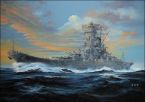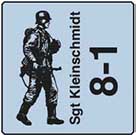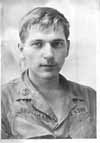morganbj
Posts: 3634
Joined: 8/12/2007
From: Mosquito Bite, Texas
Status: offline

|
quote:
ORIGINAL: Mistmatz
I like your test setup, but IMHO the sample size is by far too small too be statistically significant.
Well, larger samples would be nice, but the t test accounts for sample size through the use of degrees of freedom. It calculates the actual probabilities based on sample size. If the calculate probability (p) is below some value, usually .05, then it is statistically significant. So, I have to disagree with you there, Mistmatz.
But, this p is true only for the conditions set for the test. I think to draw the kind of conclusions you want, the test(s) would have to be set up with a little more control. E.g., I think each TF would have to be the exact same makup of ships. Several tests would then have to be conducted with varying detection distances, pilot experience and skill levels, and so forth. Then the same tests run with different TF makeup. Please understand, Rader, that what you did is not wrong, it's actually guite good. It's just not the complete picture - yet.
The thing to remember is that statistical significance does not mean practical significance. What does a .14 increase in probability really mean? One additional TF will get discovered 14 times every 100 searches. On average. And with TF makeup as it appeared in the test. And with the exact same range, with the same pilots, etc. That is why a little more testting should be done. And perhaps, Mistmatz, this is really what you were referring to, so I do not mean to discount your concern with my comments above.
This test did get significant results that should not be ignored as evidence that something may be a tad odd.
Nice job.
BTW, I teach statistics at the doctoral level at a university and really appreciate someone who uses these techniques for simple things like this. They don't always need to be used for some overblown, academic, pompus, research-about-nothing-important dissertation. I'm quite impressed, Rader. Drive on.
|
 Printable Version
Printable Version






 (although this was not a statistically significant effect, p = 0.15).
(although this was not a statistically significant effect, p = 0.15). 




















 ) So chill out. With their limited resources they have to prioritize, but I am sure that this problem will be addressed in a reasonable amount of time.
) So chill out. With their limited resources they have to prioritize, but I am sure that this problem will be addressed in a reasonable amount of time. 

 New Messages
New Messages No New Messages
No New Messages Hot Topic w/ New Messages
Hot Topic w/ New Messages Hot Topic w/o New Messages
Hot Topic w/o New Messages Locked w/ New Messages
Locked w/ New Messages Locked w/o New Messages
Locked w/o New Messages Post New Thread
Post New Thread